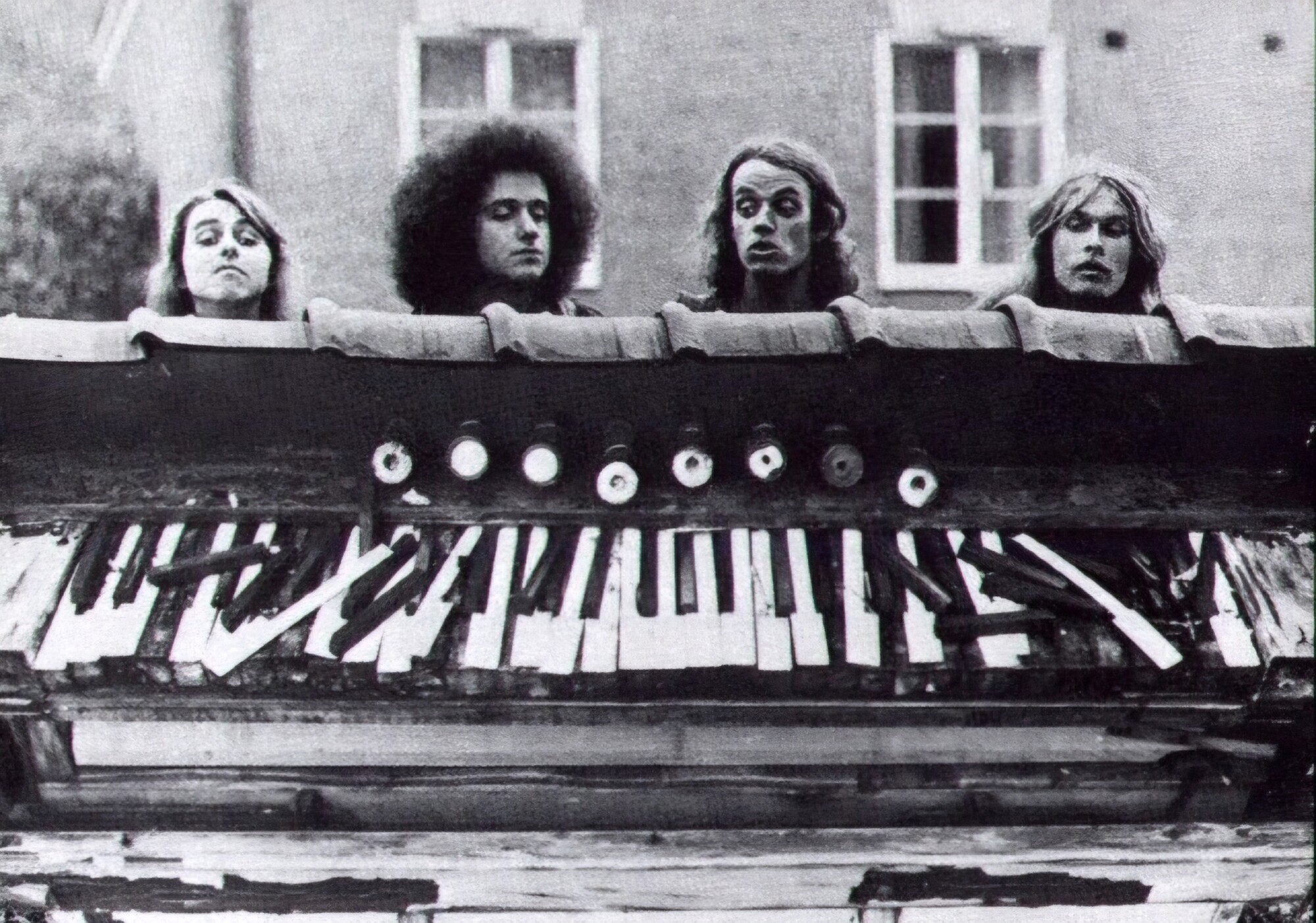Samla Mammas Manna | Interview | Coste Apetrea
Samla Mammas Manna, a Swedish experimental music ensemble formed in the early 1970s, gained prominence for their eclectic and avant-garde approach to composition.
Their works often fused elements of jazz, rock, and folk, showcasing intricate instrumental arrangements and unconventional song structures. Samla Mammas Manna’s innovative style and whimsical lyrics set them apart within the experimental music scene of their era. The band’s daring sound and dynamic live performances earned them a dedicated following both in Sweden and internationally. Notably, guitarist Coste Apetrea’s virtuosic contributions played a pivotal role in shaping the band’s distinctive sound and musical direction. Throughout his career, Apetrea continued to explore diverse musical avenues, solidifying his legacy as a pioneering figure in experimental music.
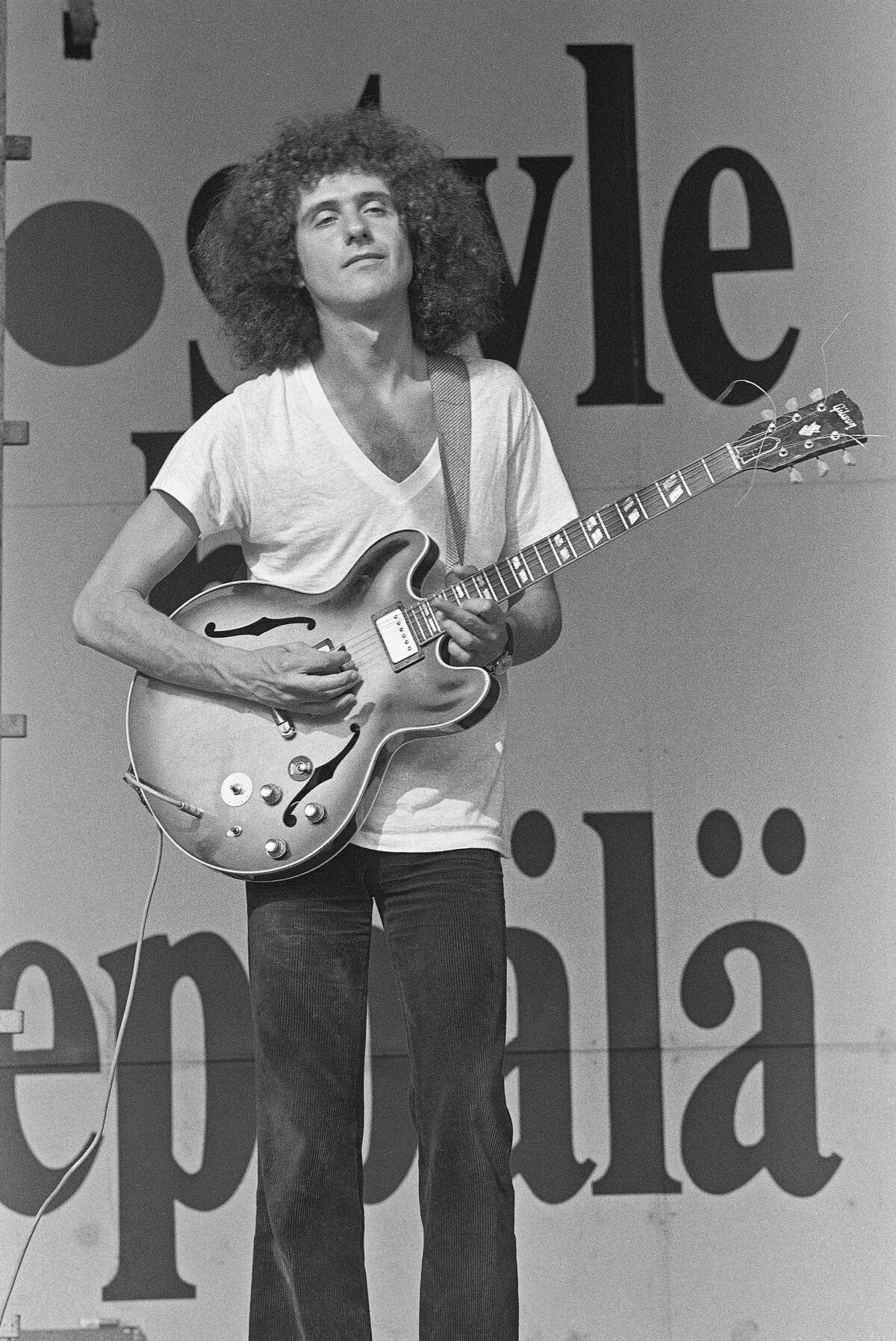
“Anything that sounded like new music was immediately absorbed”
Where and when did you grow up? Was music a big part of your family life?
Coste Apetrea: I grew up in Sweden, in a town called Falkenberg on the west coast, until I was nine. My mother was from Austria and was very musical; she knew a lot of songs and would sing all day long. It was probably through her that I developed some talent.
When did you begin playing music? Who were your major influences?
Around 1963, we ended up in a small place called Ödeshög, where I started playing the guitar because of a friend of my brother’s who knew some music and owned a Hofner guitar and a Swedish Hagström amp. He played some Beatles songs with my brother, who played primitive drums, and they rehearsed in our basement. He let me borrow his equipment, and I spent a lot of time, when they were not there, trying to learn some songs.
What were your first musical involvements? What bands were you a member of prior to the formation of Samla Mammas Manna?
I had a blues duo in high school when I was around 16, and we played at school events.
Can you elaborate on the formation of Samla Mammas Manna?
Samla Mammas Manna was formed around Lars Hollmer in 1969. Hans Bruniusson and Lars Krantz had been in a 60s pop band and had some experience in the business. They formed the band with Lars Hollmer around 1969.
In June 1970, there was a special festival in Stockholm, which marked the beginning of a new record company, Silence Records, started by Anders Lind and Josef Hochhauser. Anders was a bird watcher who ended up at Stockholm’s one and only psychedelic club, Philips, run by Bill Öhrström around 1967. Bill was producing at a major record company and created the famous organ duo Hansson & Karlsson, which was a big success. Anders Lind used to go to Philips, bring his Revox, and record the live music. He got friendly with the musicians and ended up with a lot of recordings that sounded good to them. This led to him getting the job to record Bo Hansson’s Lord of the Rings, which was a big success and marked the beginning of Silence Records.
Anders Lind heard Samla at that festival in 1970 and signed them.
What influenced the band’s sound and what was the main idea behind its formation?
To understand our influences, you would have to live in that time. Most kids who started bands had similar influences; it was a very small world, and rock music was not widely covered in the media. So, anything that sounded like new music was immediately absorbed. The music from our generation influenced us, along with anything else we happened to hear that had some quality.
How did you decide to use the name “Samla Mammas Manna”?
It was just a play on words.
How did you get signed to Silence Records?
As I mentioned above, from our gig at the festival called “Gärdetfesten.”
In 1971 the band released their first album. How pleased was the band with the sound of the album?
I was not yet in the band at that time, but it was the first album with Silence Records. Bands were never pleased with the sound of their recordings during that time.
‘Måltid’ is one of the most highly regarded records in the Rock In Opposition genre. What’s the story behind it? Where did you record it? What kind of equipment did you use and who was the producer? How many hours did you spend in the studio?
That was my first recording with the band. We had a long tour in the north during autumn 1972, and we wrote a lot of those songs during our free time in hotels. It was recorded at Decibel Studio by Anders Lind in 1973 and took a week to finish. The studio had an 8-track recorder and a brand-new plate reverb. Bo Hansson was in the room next door, and he had all his keyboards there, including a Mellotron and synthesizers. He came around every day and let us borrow his Mellotron, which is featured on a few songs.
I used a Marshall 100-watt amplifier with a 4×12 cabinet and a Les Paul Deluxe from 1969 that I bought for $200. The drummer had a traditional Ludwig set with extra home-made percussion. The bass was a Rickenbacker with a Hagström 100-watt amp and a homemade speaker cabinet. The keyboards included a Fender Rhodes, a Hohner Clavinet, an acoustic grand piano, and, as mentioned, the Mellotron.
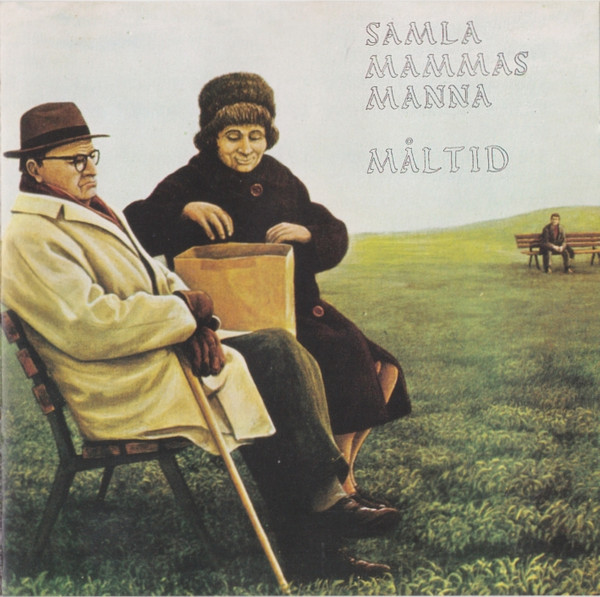
What was the concept behind it and what influenced you to record this album?
There was no specific concept; everything came from our minds and our amazing mental connection during those days. The Swedish progressive music scene was just on the rise, and we became a symbol of what was on most young people’s minds then. We were perhaps a lot more experimental and musically advanced than the average rock band but had the same spirit. Lars Hollmer and I had an interest in jazz, which likely influenced some songs and our approach to improvisation.
Would you share your insight on the album’s tracks?
It’s difficult to provide a brief insight that does the tracks justice or is even worth listening to because it was a long time ago. Today, it’s clear that the liberal and experimental spirit of that time is unlikely to return soon. Back then, society was open, and culture was held in high regard. The movement that started in 1970 created a parallel music scene that could compete with the commercial one. We had music forums in almost every town, four to five record labels, our own distribution, music papers, and vinyl pressing. Around 200,000 to 300,000 kids were involved in these music forums during the peak of this movement, which was a significant influence.
‘Klossa Knapitatet’ followed in 1974.
It was more improvised. We had toured a lot and were a bit less enthusiastic than during ‘Måltid,’ which can be heard in the album. However, we played better together.
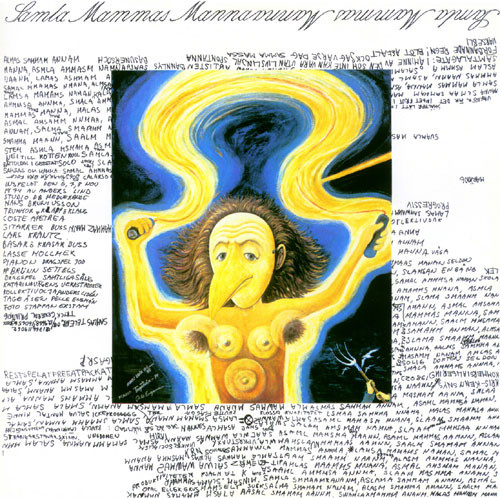
What was the recording process for ‘Snorungarnas symfoni’? How was it to collaborate with Gregory Allan Fitzpatrick?
Greg came up with the songs and was worried we might think they weren’t good enough, so he sped up the demo tape. Despite this, we liked it, and we recorded the album in a week at Stockholm’s most famous studio. Greg was very creative, and we had a lot of fun working with him. Everyone enjoyed the process except Lars Hollmer, who wasn’t too fond of playing other people’s music. We played it live for about a year, and I think there’s a live version on YouTube somewhere.
Two more albums followed with a name change to Zamla Mammaz Manna. What’s the story behind making ‘För äldre nybegynnare / Schlagerns mystik’ and ‘Familjesprickor’?
I left the band in 1976 and collaborated with Pekka Pohjola and Jim Pembroke from the amazing band Wigwam in Helsinki. Then, in 1977, I started a collaboration with the great guitarist Jukka Tolonen for about seven years.
How did you usually choose the cover artwork for the albums?
We had an artist friend, Tage Åsen, who had tons of work in his studio. We would visit him, have some fun, and come back with a great piece of art.
Would you like to comment on your guitar technique? Give us some insights on developing your guitar technique.
Like many of my generation, I was influenced by the British blues players. In addition, I listened to a lot of jazz and flamenco music, so my technique is a mix of various styles. I learned to play with a pick when I was 20, so I spent a lot of time refining that skill. I guess that’s the reason for my sound. I have mastered a few different picking styles that are hard to explain without a guitar to show you.
You played with many different musicians. What are some of your albums and collaborations that you are most proud of?
My work with the great piano player Stefan Nilsson (three albums) is some of the best. I also like some of my seven albums with Jukka Tolonen; we wrote the music 50/50, though not many people know that. I also did a song with the fantastic steel pan player Rudi Smith called ‘El Vito,’ which is on YouTube. As I get older, I tend to be less critical and think a lot of my work was pretty decent.
How would you comment on “Rock in Opposition”?
Alright, I began collaborating with Henry Cow’s manager (who was more of a member in the band); I think his name was Phillip. I booked them for a tour and some radio shows in Sweden with the promise that Phil should book Samla in the UK. I was the only enthusiast of Samla at the time; the feeling in the band was not so good, which is why I left shortly after the tour with Henry Cow, who kept their promise and booked Samla for a few gigs in the UK. Henry Cow was part of RIO and brought Samla into that. This made the guys more interested, and they started collaborating with many of the musicians from those bands afterwards.
Progg was a left-wing and anti-commercial musical movement in Sweden that began in the late 1960s and became more widespread in the 1970s. Did you consider yourself as part of it?
Yes, absolutely, but it was much more loosely politically, I would more call it anarchistic. Henry Cow were more left-leaning than Samla. Maybe I was the only one in the band who was really interested in Marxism since I studied it at university.
What do you recall from the 1st RIO festival that was held on 12 March 1978, at The New London Theatre, London? You also appeared at the second festival that was held in Milan, Italy.
Wasn’t there, played with Jukka Tolonen in Montreux.
Looking back, what was the highlight of your time in the band? Which songs are you most proud of? Where and when was your most memorable gig?
Most of it. Most gigs were great, except the ones before I left. Hans Bruniusson was very angry for some unknown reason and played destructively on drums… so I quit. But most gigs before that in those four years were great. We then played together from 1990 until Lars died in 2008 and had some wonderful gigs, with and without Hans Bruniusson, who was replaced by Tatsuya Yoshida from 2003.
Is there any unreleased Samla Mammas Manna material?
Yes, a live recording from a festival in Montreal 2007 (and maybe you haven’t heard ‘Dear Mamma’?).
What currently occupies your life? Any future projects we should expect?
I have several projects and a lot of recorded material that I plan to release this year. I have a trio, a duo with a great sax player, and I play with Suranjana Ghosh, a master tabla virtuoso, to mention a few.
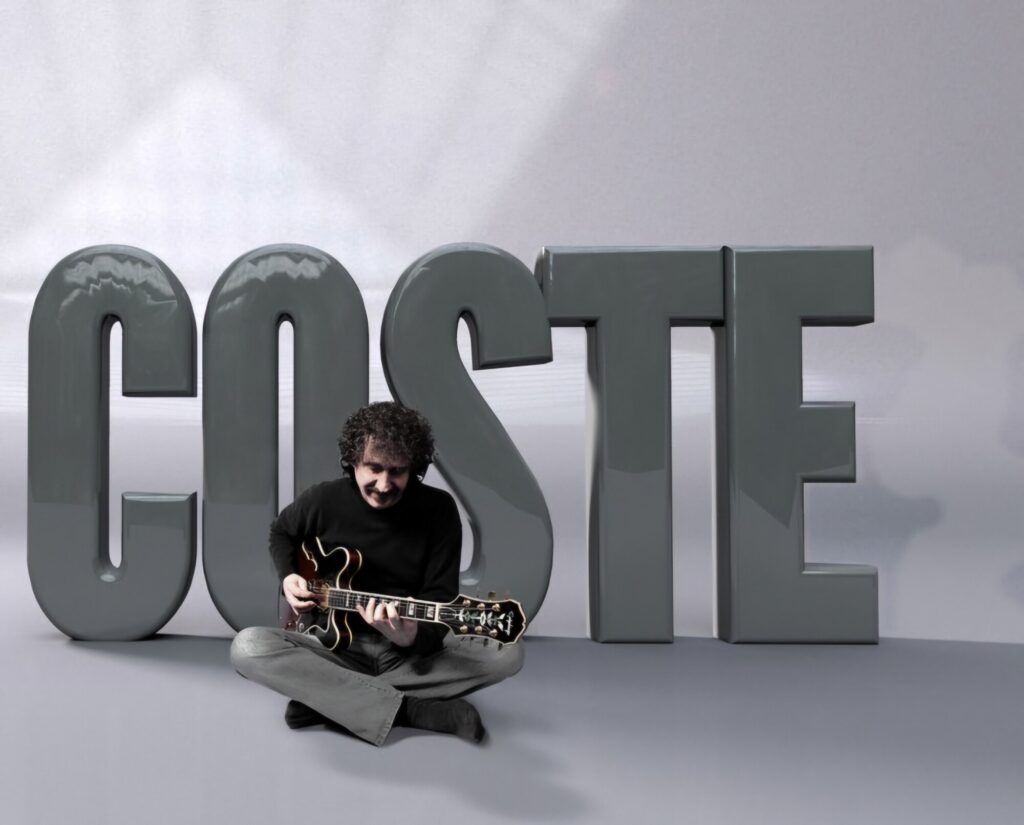
Have you found something new lately you would like to recommend to our readers?
Capillary Action is very nice!
Klemen Breznikar
Headline photo: Samla Mammas Manna
Coste Apetrea Official Website / Facebook / Instagram

